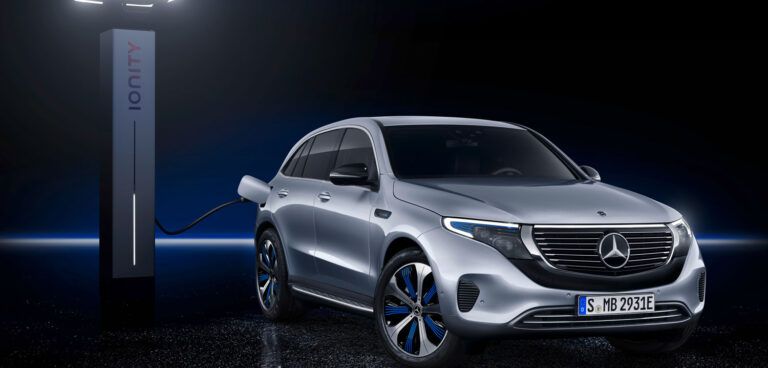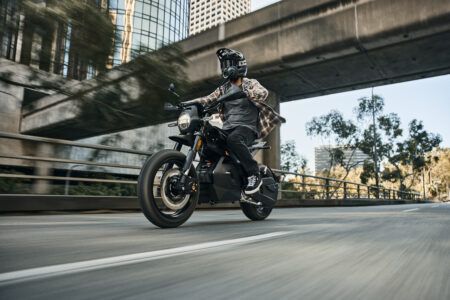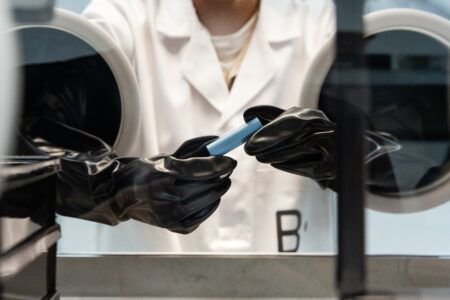Mercedes-Benz has presented the first vehicle under its new EQ brand, the all-electric EQC. The crossover SUV is an important milestone in the OEM’s electrification strategy, and is powered by two electric motors, with one compact drivetrain located on the front and one on the rear axle.
The vehicle has a combined output of 300kW (414ps) and a stated range of more than 450km on the NEDC. Peak torque is 765Nm, and the vehicle’s power capacity is an 80kWh lithium-ion battery. The front electric motor is optimized for efficiency in the low-to-medium load range, while the rear is vital to the vehicle’s dynamic performance.
The EQC is equipped with a water-cooled onboard charger with a capacity of 7.4kW, making it suitable for AC charging at home or at a public charging point.
However, the EQC also supports Mercedes-Benz’s Wallbox, which can provide maximum output of up to 110kW where available. This will enable charging of 10-80% in approximately 40 minutes.
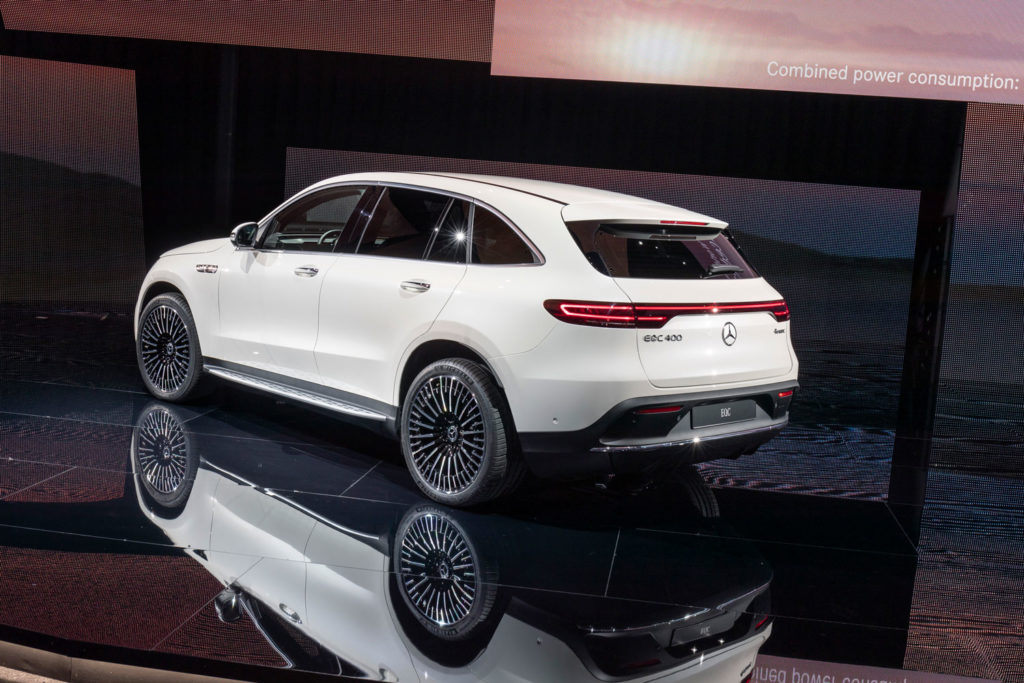 The EQC’s high-voltage battery is installed beneath the vehicle floor, and is surrounded by a stable frame that can absorb energy, and includes deformation elements as part of the design – these elements are installed between the frame and the battery.
The EQC’s high-voltage battery is installed beneath the vehicle floor, and is surrounded by a stable frame that can absorb energy, and includes deformation elements as part of the design – these elements are installed between the frame and the battery.
A battery guard protects the unit from being pierced by foreign objects. The EQC also includes a multi-stage safety concept system that deploys in the event of an accident, automatically shutting down (reversibly or irreversibly, depending on the severity of the incident). The architecture also includes shutdown points to enable emergency teams to deactivate the high-voltage system.
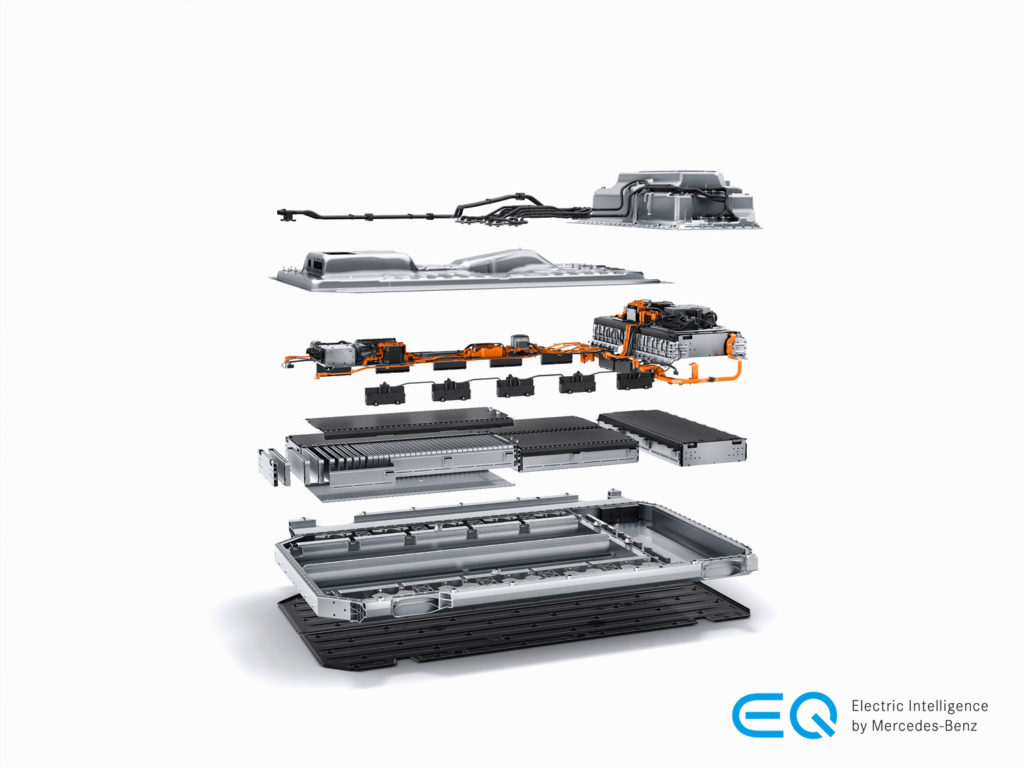 Series production of the EQC will begin in 2019 at the Mercedes-Benz plant in Bremen, Germany, and will be integrated into the OEM’s ongoing series production. One area in which the car maker has researched technologies vital to production is the battery joining center where the two electric powerpacks are installed into the bodyshell.
Series production of the EQC will begin in 2019 at the Mercedes-Benz plant in Bremen, Germany, and will be integrated into the OEM’s ongoing series production. One area in which the car maker has researched technologies vital to production is the battery joining center where the two electric powerpacks are installed into the bodyshell.
Data tags used in the production process identify the vehicle as an EV, and the body is suspended and deposited onto a frame. Support arms raise the battery into the vehicle floor from below, a process which is monitored by an employee.
Mercedes-Benz is also preparing for production of its own batteries with the expansion of its battery plant in Kamenz, near Dresden.



